There’s something deeply satisfying about planting a bare-root tree and watching it grow into a fruit-bearing beauty. If you’ve purchased a Fuyu persimmon tree — the non-astringent, bright-orange variety loved for its crisp, apple-like sweetness — you’re in for a rewarding experience. This guide will walk you through every step, from receiving your bare-root tree to planting, care, and harvesting. With the right care, that dormant stick will soon become a thriving tree heavy with sweet fruit.
1. Why Choose a Fuyu Persimmon?
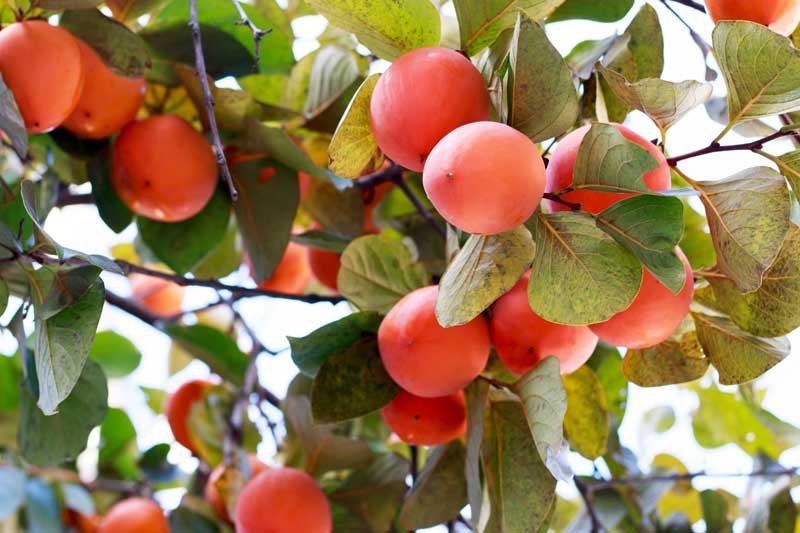
The Fuyu persimmon (Diospyros kaki) is one of the most popular Asian persimmon varieties for home gardeners, and for good reason:
- Non-astringent: You can eat it while it’s still firm — no need to wait until it softens.
- Crisp and sweet: The fruit has a delightful apple-like texture and mild sweetness.
- Self-fertile: You only need one tree to produce fruit.
- Beautiful appearance: The tree’s glossy green leaves and bright orange fruits make it a landscape standout.
- Adaptable: Grows well in USDA zones 7–10 and tolerates a range of soil types.
Fuyu persimmons offer beauty, taste, and reliability — a perfect combination for home gardens.
2. Understanding Bare-Root Trees
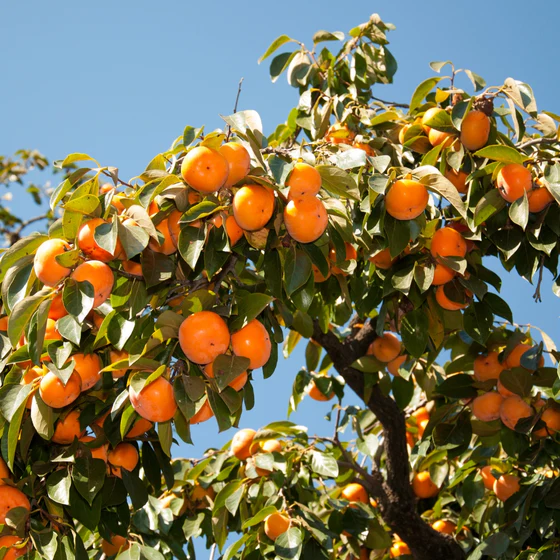
Bare-root trees arrive dormant, without soil around their roots. This form has several advantages — lighter weight, easier planting, and lower cost — but it also demands careful handling.
Important notes for bare-root trees:
- Plant them while dormant, usually in late winter or early spring.
- Keep roots moist but not waterlogged until planting. Wrap them in damp material if needed.
- Inspect roots before planting. Trim off any damaged or dead sections with clean pruning shears.
Proper handling in the early stages ensures your tree wakes up healthy and ready to grow once spring warmth arrives.
3. Choosing the Right Spot & Preparing the Soil
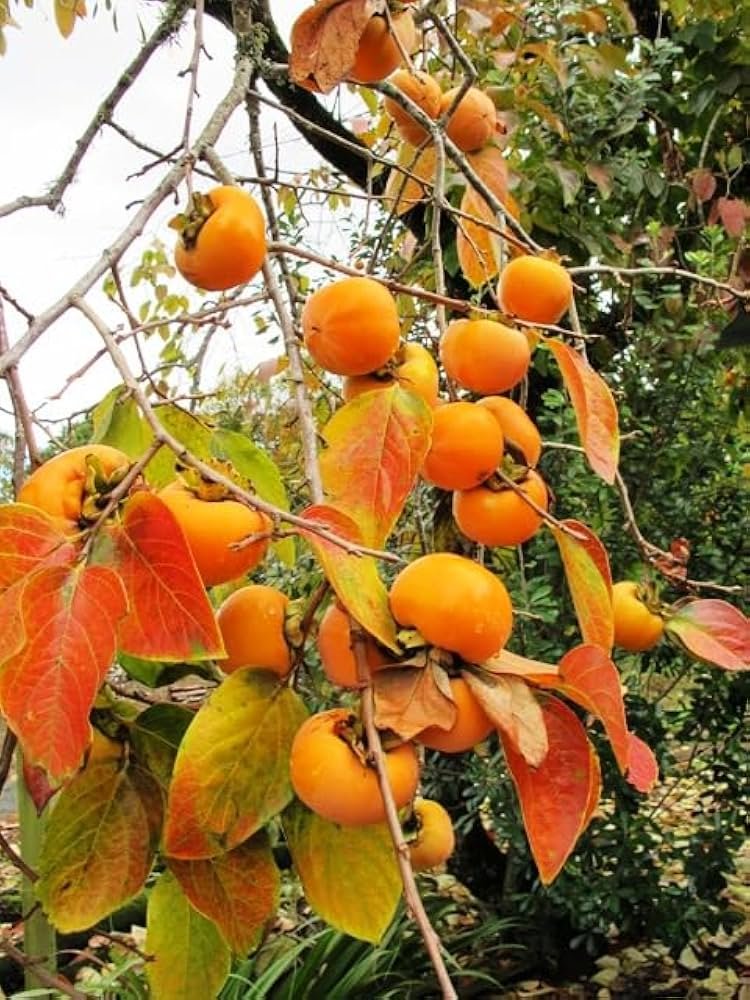
Fuyu persimmons love warmth and sunlight. Selecting the right planting site is crucial for healthy growth and fruiting.
Ideal site conditions:
- Full sun: At least 6 hours of direct sunlight daily.
- Well-draining soil: Persimmons dislike “wet feet.” Loamy or sandy-loam soil is ideal.
- pH level: Slightly acidic to neutral (around 6.0 to 7.0).
- Space: Allow at least 15–20 feet between trees for good air circulation and future growth.
Before planting, dig a hole that’s wider than the spread of the roots and slightly deeper than their length. Loosen the soil at the bottom so the roots can penetrate easily.
4. Planting Your Bare-Root Fuyu Persimmon
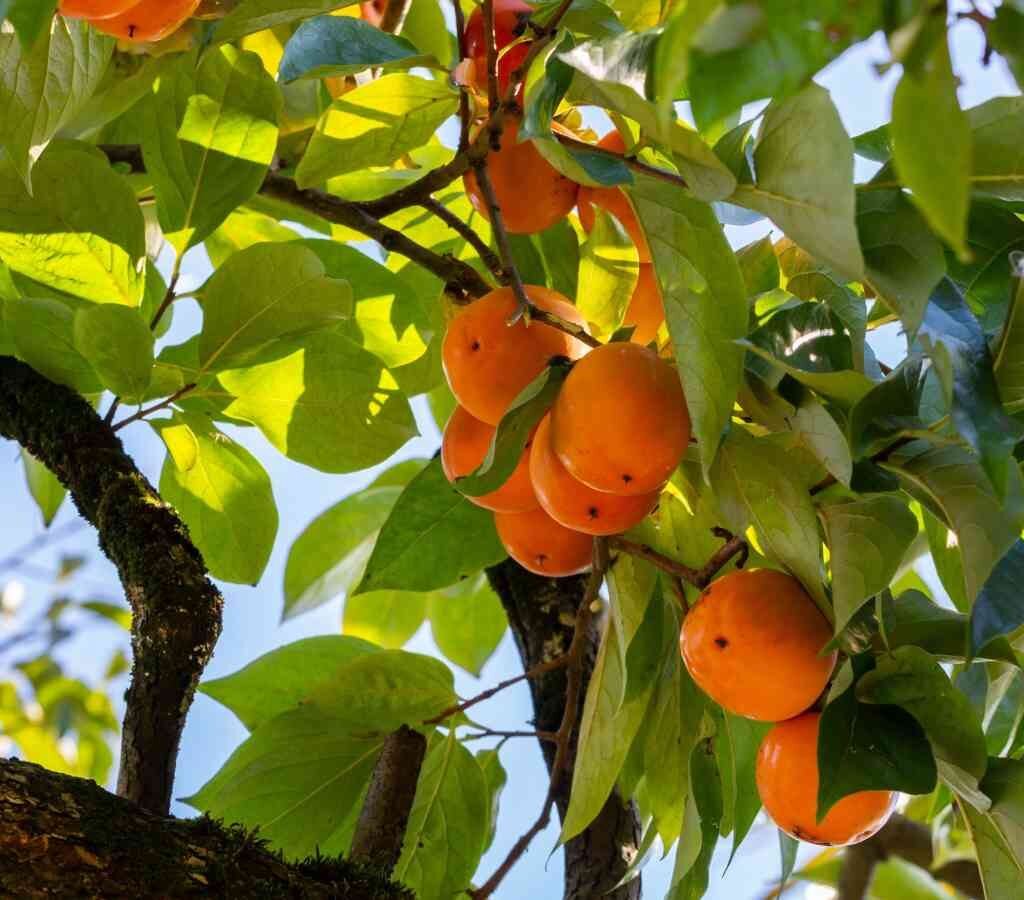
When the weather is suitable and the ground is workable, it’s time to plant your bare-root tree.
Step-by-step planting guide:
- Inspect and hydrate: Remove packaging, inspect roots, and soak them in water for about 30 minutes before planting.
- Position correctly: Place the tree in the hole so that the graft union (the bulge above the roots) sits just above soil level.
- Spread roots: Fan out the roots naturally, avoiding bends or folds.
- Backfill with soil: Refill the hole with the original soil, gently firming it as you go to remove air pockets.
- Water thoroughly: Water deeply to settle the soil around the roots.
- Mulch: Apply a 3–4-inch layer of organic mulch around the base to retain moisture and suppress weeds, but keep it a few inches away from the trunk.
Proper planting sets the foundation for long-term success.
5. First-Year Care: Watering, Mulching & Protection
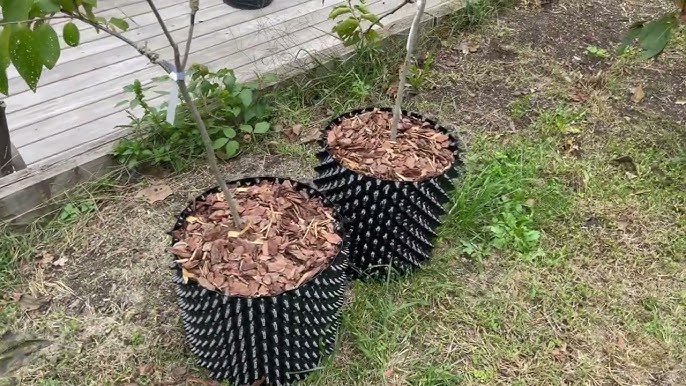
The first year is all about root establishment. While the tree might not grow much above ground, the real action is happening beneath the surface.
Key care tips for the first year:
- Watering: Water deeply once a week during the growing season. Consistent moisture helps roots establish, but avoid waterlogging.
- Mulching: Maintain mulch around the base to conserve moisture and keep the soil cool.
- Protection: Use tree guards to protect from rodents or sunscald, and stake if necessary to prevent wind damage.
- Fertilizing: Avoid fertilizing at planting time. Wait until the tree shows active growth in the second season before applying any nutrients.
Patience is essential — good root development now leads to a stronger, more productive tree later.
6. Training & Pruning: Shaping the Tree for Success
Early pruning and training help shape your tree for years of healthy growth and easy harvesting.
Tips for pruning and training:
- After planting: Cut back the main stem slightly to balance top growth with the reduced root system.
- First years: Focus on building a strong framework by selecting 3–4 well-spaced branches as your main structure.
- Annual pruning: In winter, remove dead, damaged, or crossing branches. Keep the canopy open for sunlight and airflow.
- Light pruning only: Persimmons don’t require heavy pruning; gentle shaping is usually enough.
A well-structured tree will produce more fruit and resist disease better than an unpruned one.
7. Growing On: Ongoing Care & Fruit Development
Once your Fuyu persimmon tree is established, maintenance becomes simpler — but consistency still matters.
Watering: Persimmons are somewhat drought-tolerant once mature, but consistent watering during flowering and fruit development ensures larger, sweeter fruit.
Fertilizing: In the second or third year, apply a balanced, slow-release fertilizer in spring. Avoid excessive nitrogen — it promotes leafy growth over fruiting.
Pests & diseases: Persimmons are relatively pest-free. Occasionally, you might encounter mealybugs, scale, or leaf spot. Maintain cleanliness by removing fallen leaves and ensuring good airflow around the canopy.
Mulching & weeding: Keep mulch fresh each year, and remove any competing weeds from around the base.
Healthy soil, steady moisture, and a clean environment are the keys to a vigorous, fruit-bearing persimmon tree.
8. Harvesting and Enjoying Your Fuyu Persimmons
The most rewarding part of the journey arrives when your tree begins to bear fruit — typically 2–3 years after planting.
Harvest tips:
- Fuyu persimmons are non-astringent, so you can eat them while still firm.
- Wait until the fruit turns a rich orange before picking.
- For a crisp, apple-like texture, harvest when the fruit is firm. For a softer, sweeter flavor, let it ripen a few days longer on the tree or indoors.
- Cut fruits from the tree rather than pulling to avoid damaging the branches.
Each bite of your homegrown Fuyu persimmon will remind you of the care, patience, and love you invested from that first bare-root planting.
9. Tips & Troubleshooting: Avoiding Common Mistakes
Even experienced gardeners make mistakes when planting bare-root trees. Here’s how to avoid them:
- Planting too deep: Always keep the graft union above the soil line.
- Overwatering: Ensure proper drainage — soggy soil can cause root rot.
- Too much fertilizer: Excess nutrients, especially nitrogen, delay fruiting and promote leaf growth.
- Lack of sunlight: Persimmons need full sun for best fruit production.
- Neglecting early care: The first two years are critical for establishing a strong root system.
- Cold damage: If you’re in a cooler region, mulch heavily and protect young trees during frost.
Addressing these issues early ensures a healthy, long-lived tree.
10. Why It’s Worth It
Growing a Fuyu persimmon tree from a bare-root start isn’t just about producing fruit — it’s about nurturing life and connecting with nature’s rhythm. You’ll gain:
- A beautiful landscape tree: Glossy leaves, fiery fall colors, and bright orange fruit.
- Delicious homegrown produce: Sweet, crisp fruits perfect for eating fresh or using in desserts.
- Low maintenance: Once established, Fuyu persimmons need minimal care.
- Personal satisfaction: Watching your tree grow year by year brings an unmatched sense of accomplishment.
Whether you’re a beginner or an experienced gardener, the journey from planting a bare-root tree to harvesting your first fruit is a truly rewarding experience.
Conclusion: Planting Today, Harvesting Tomorrow
Planting a Fuyu persimmon bare-root tree is an act of patience and faith. It may look lifeless at first, but beneath the soil, magic is happening — roots growing, connections forming, life awakening. With proper planting, watering, and care, your tree will flourish, rewarding you with delicious fruits and beauty for decades.
So, grab that bare-root persimmon, find a sunny spot, and plant the seed of tomorrow’s harvest. Before long, you’ll be enjoying crisp, golden-orange Fuyu persimmons straight from your own backyard — a sweet reward for your dedication and love of gardening.
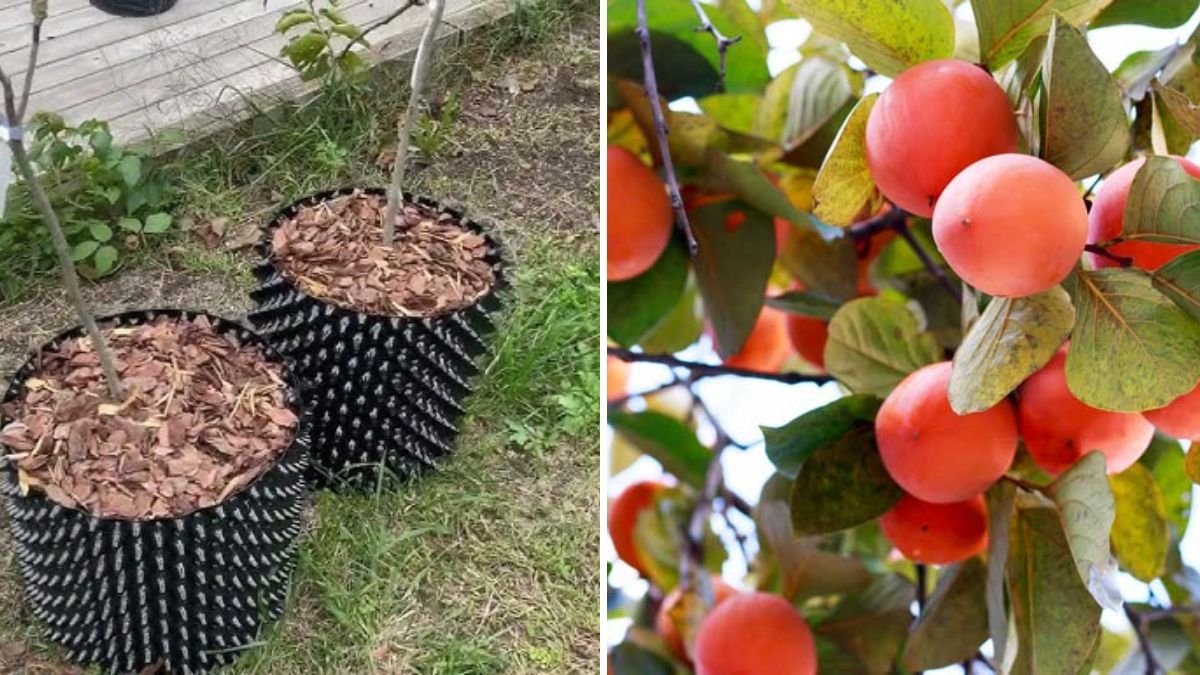
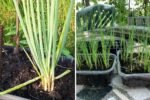

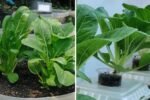


Leave A Comment